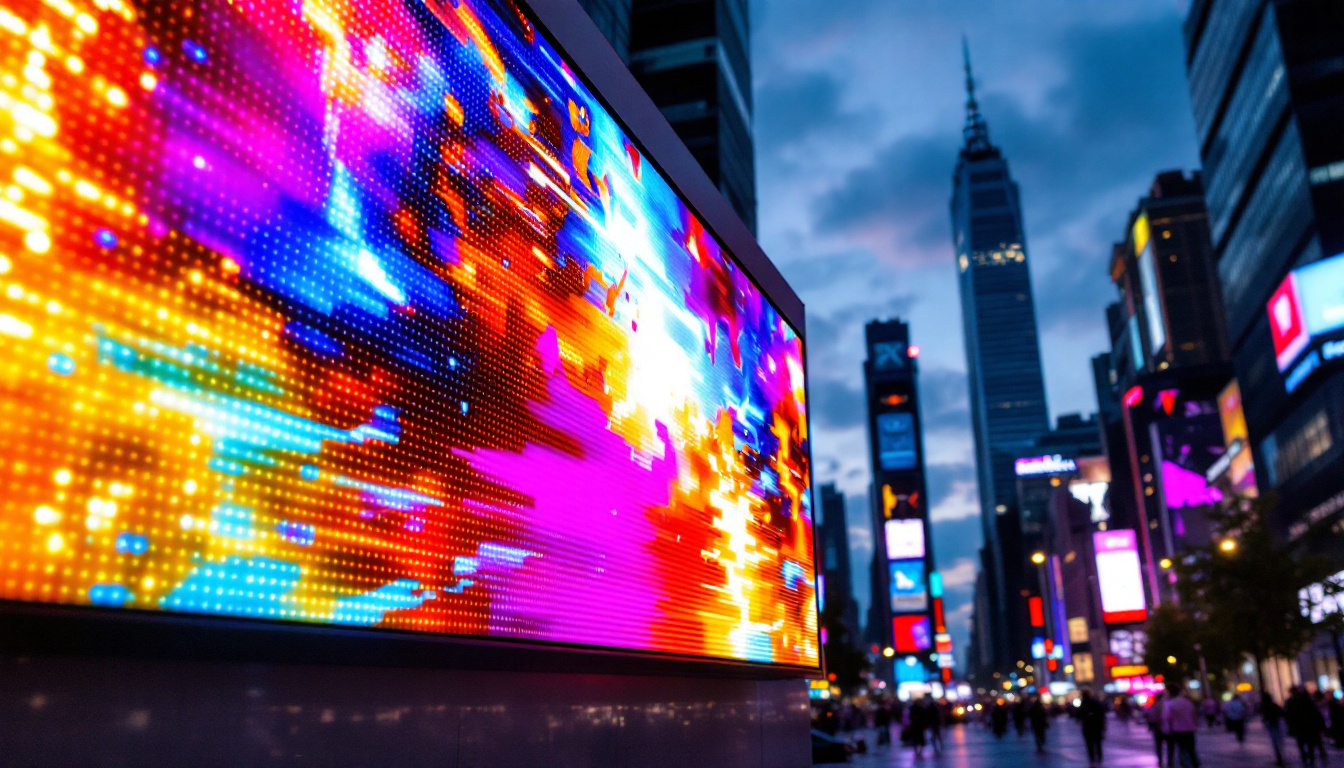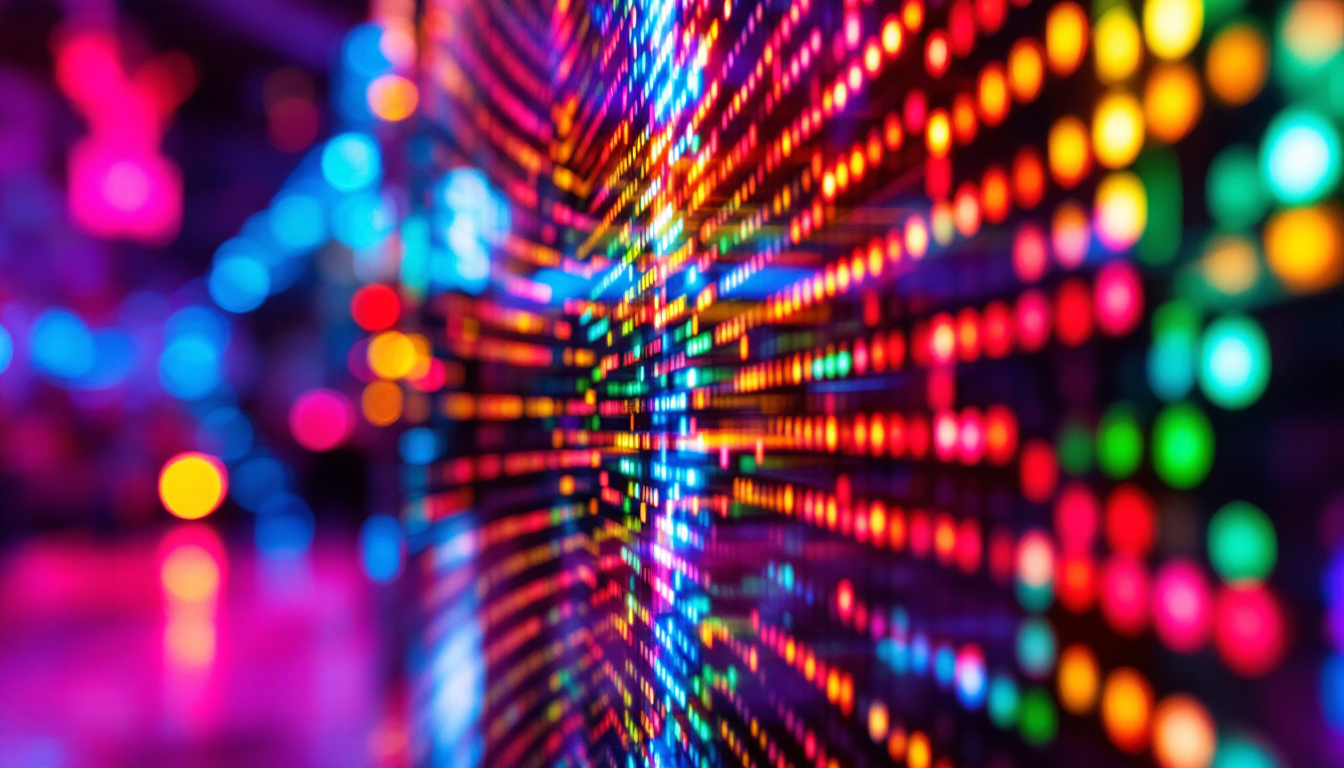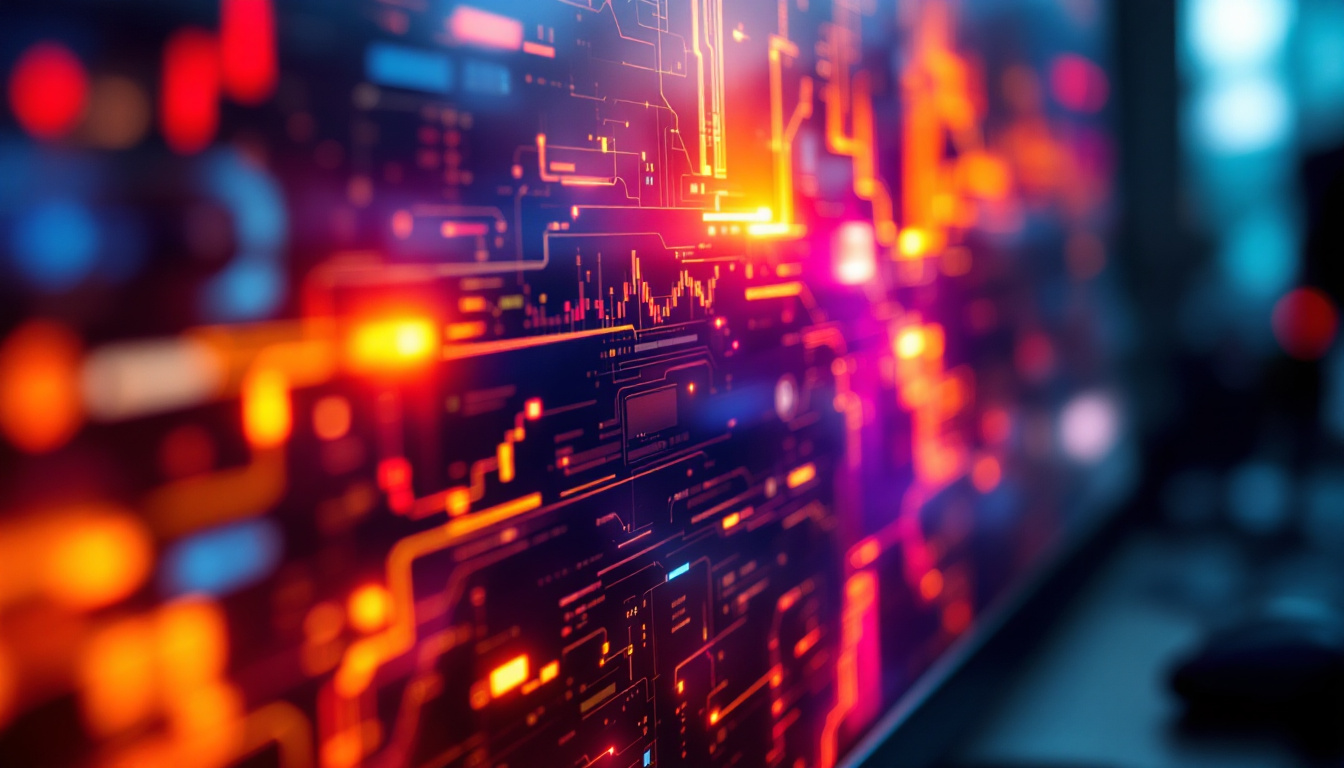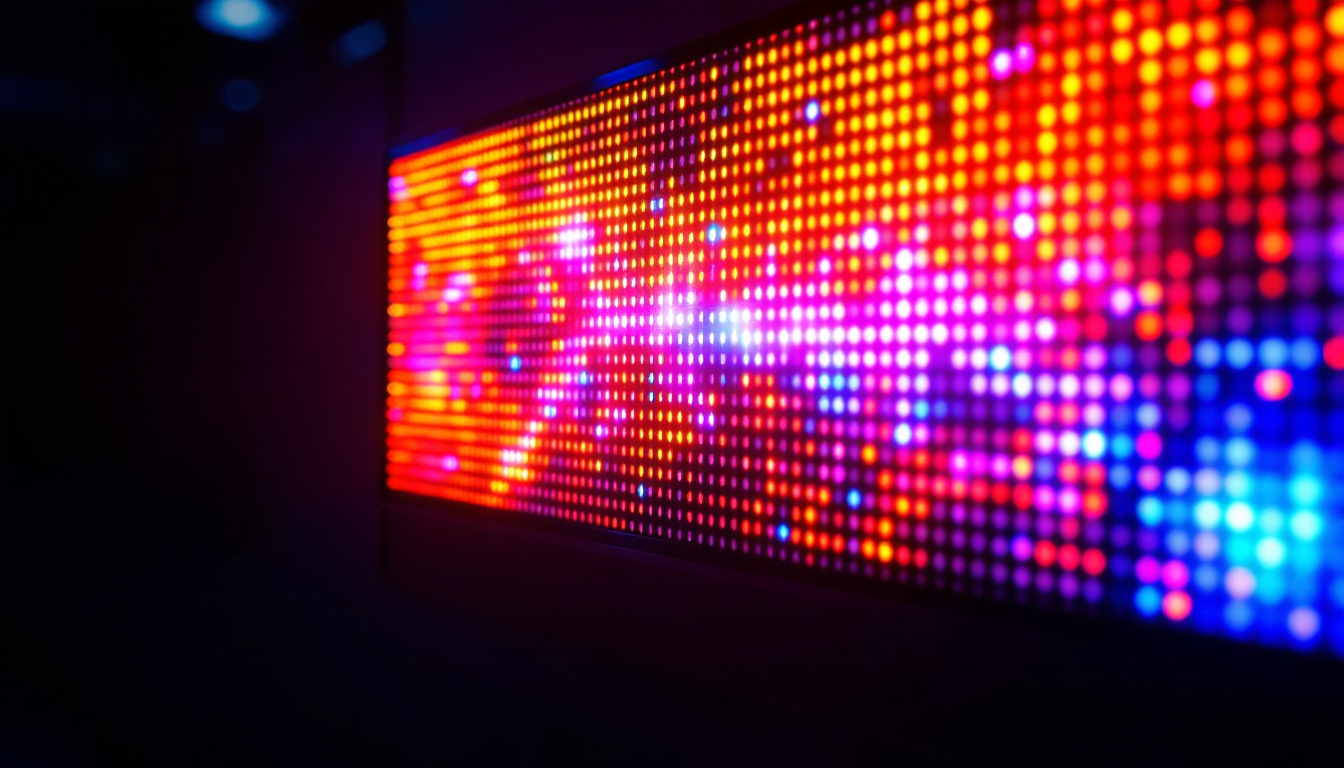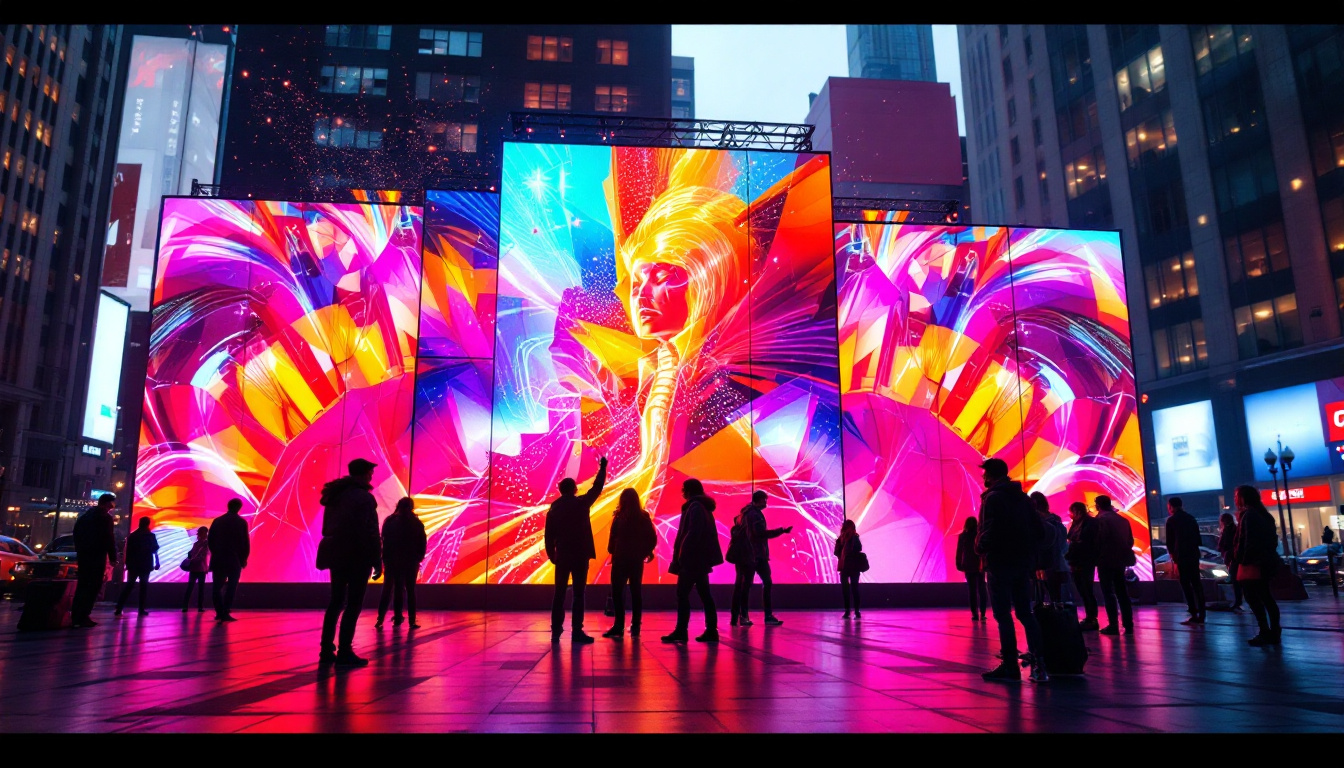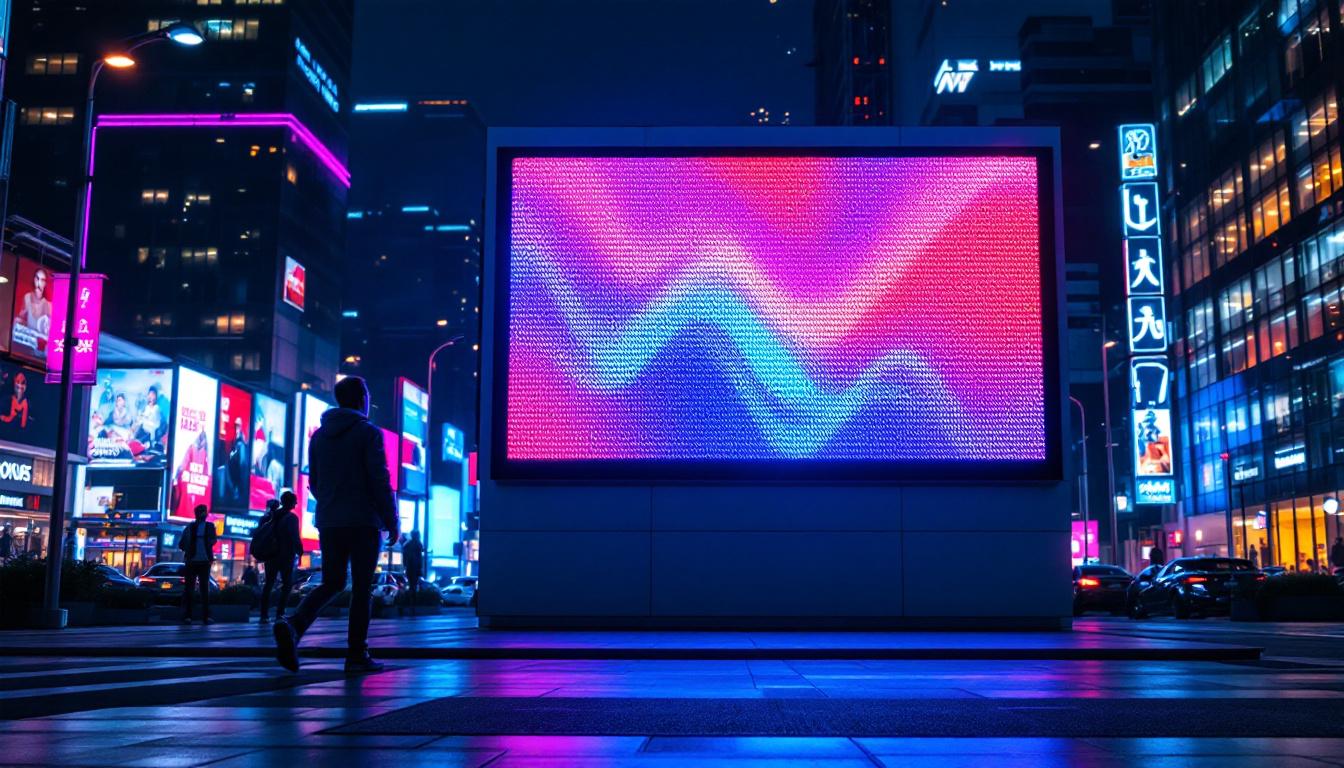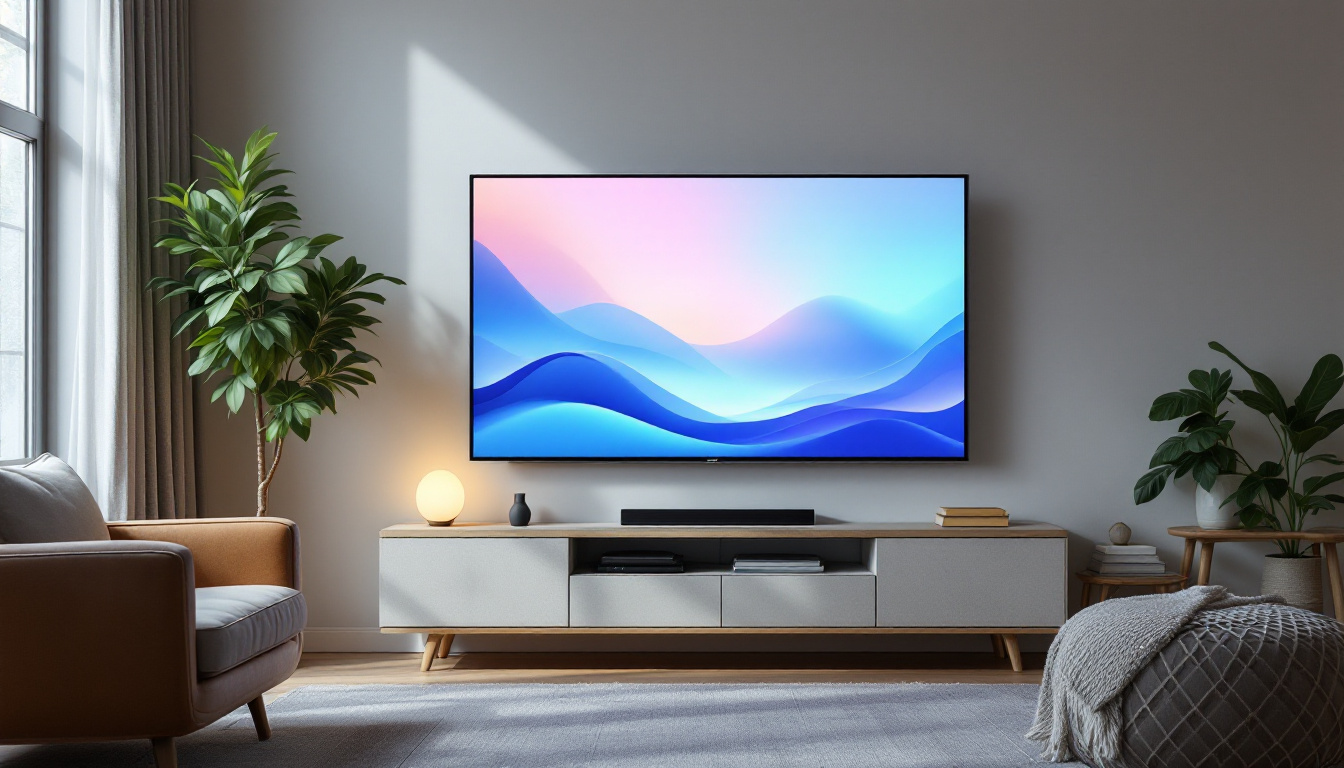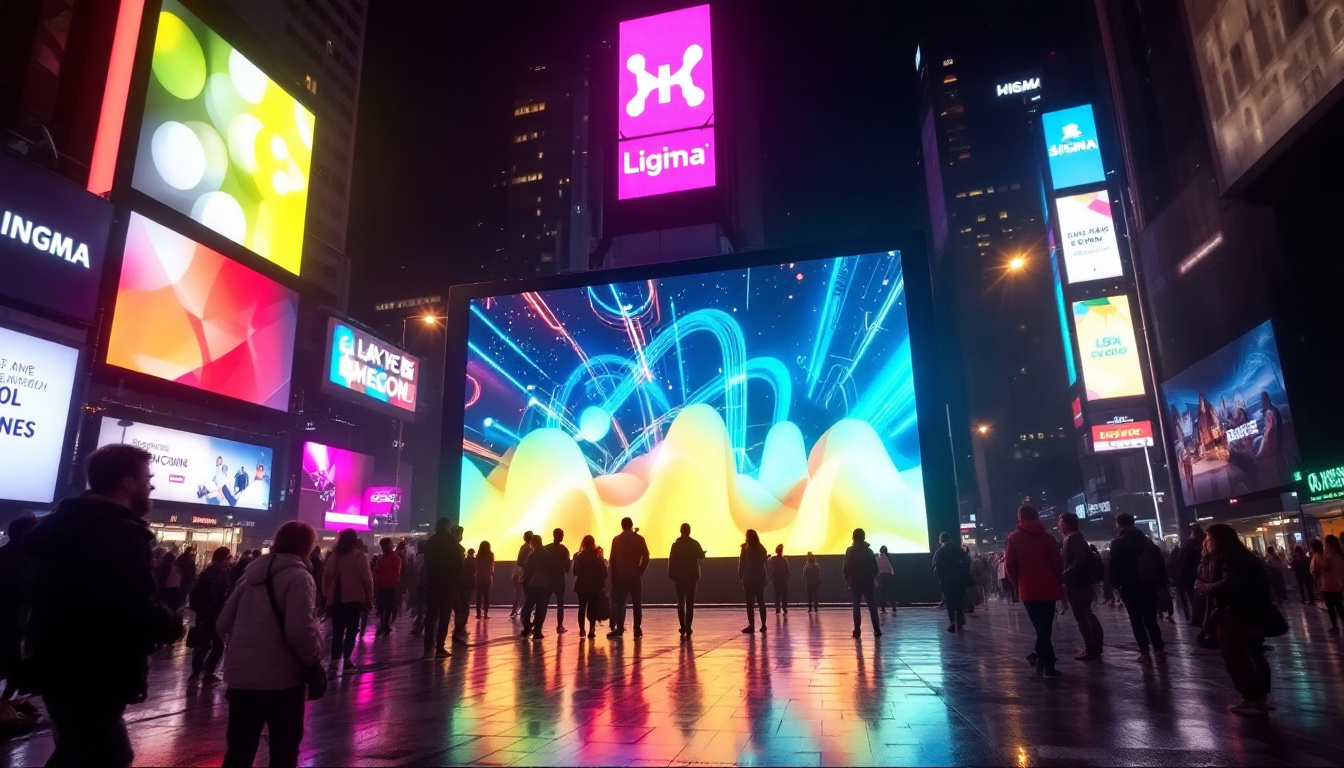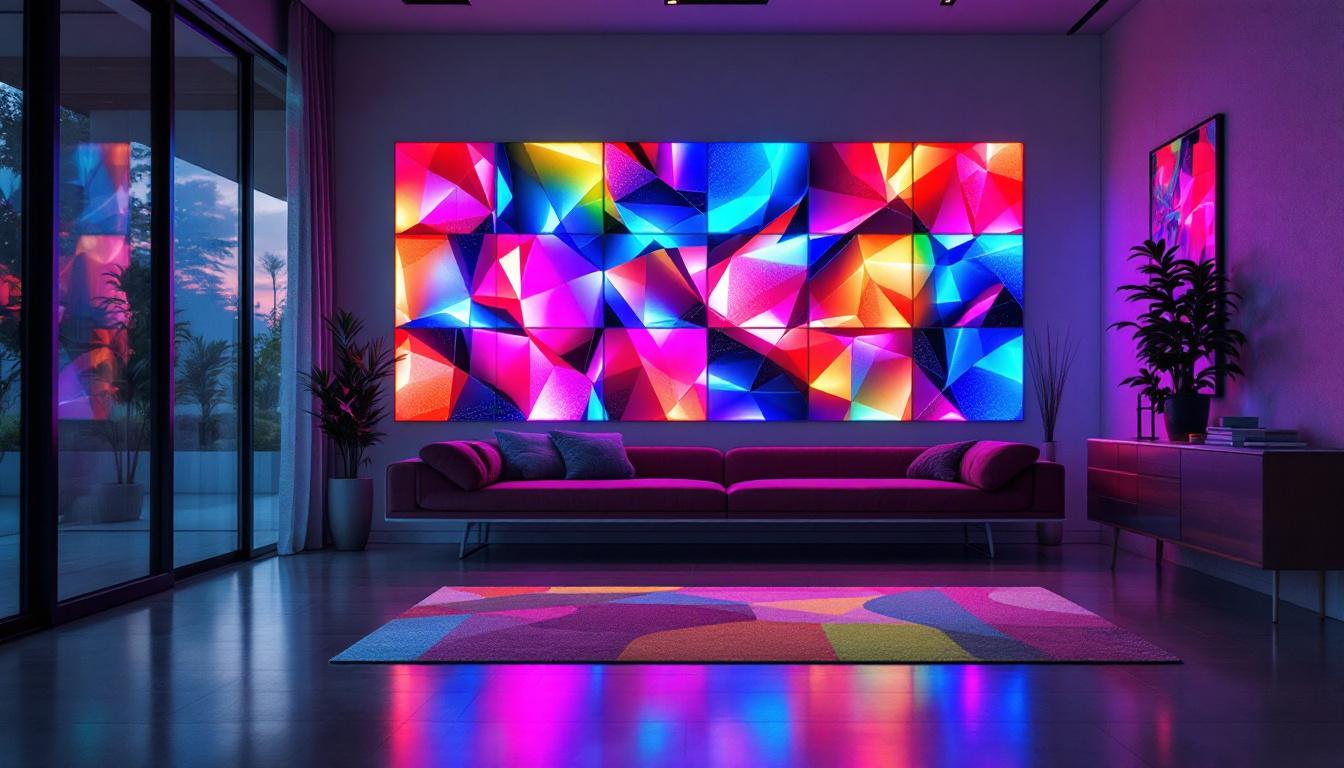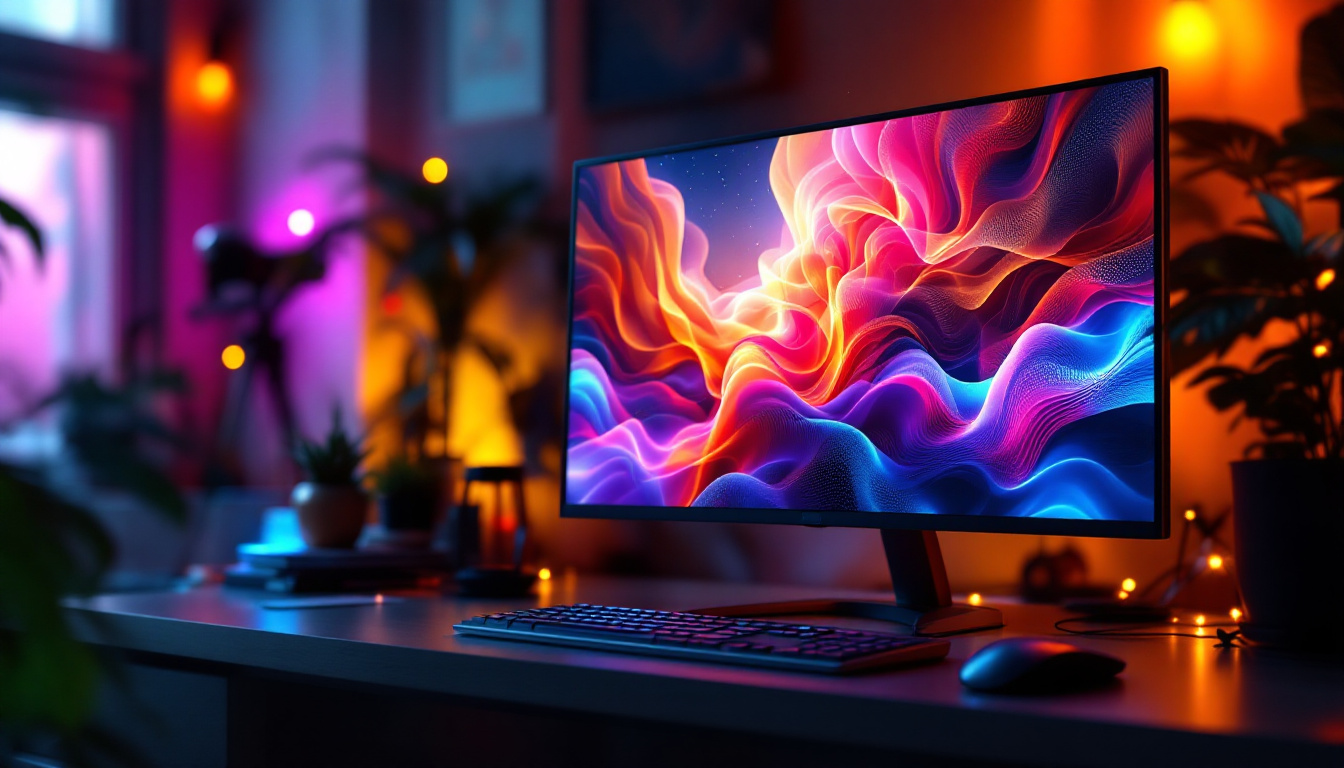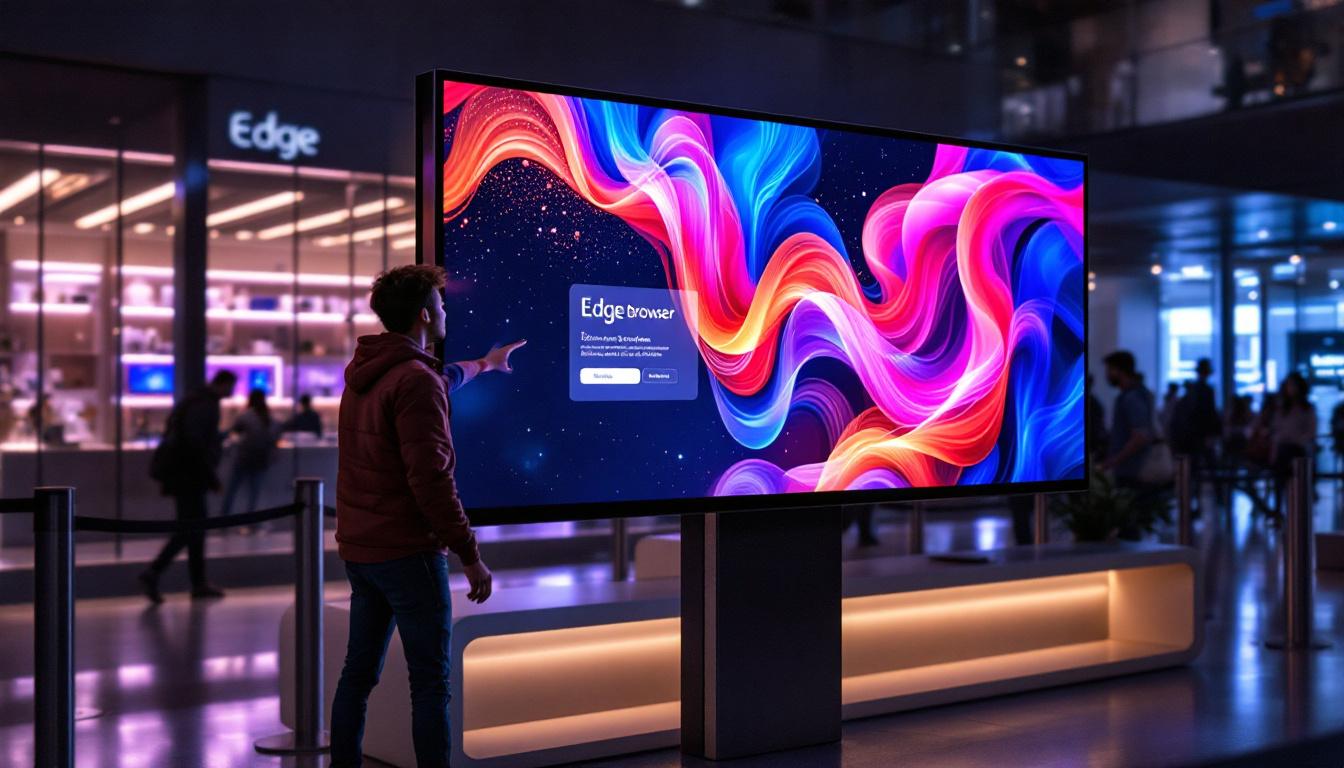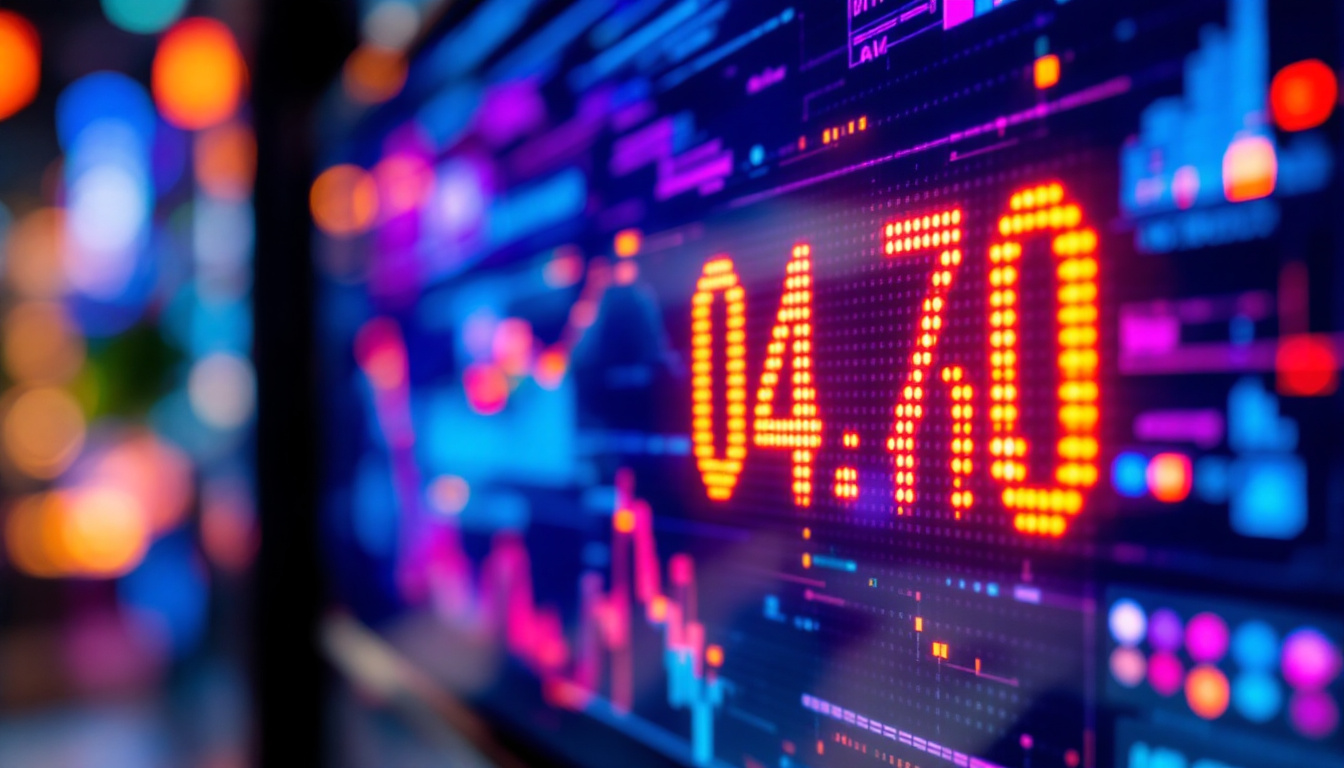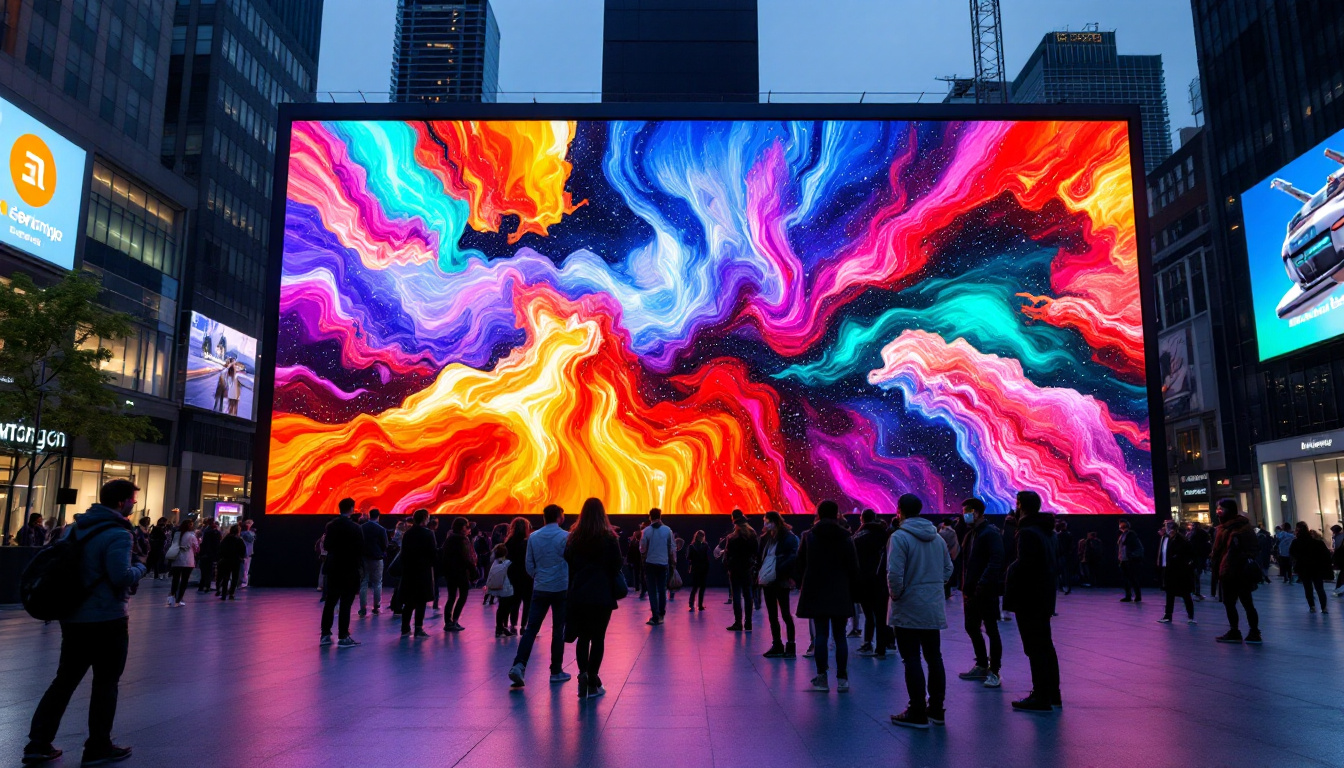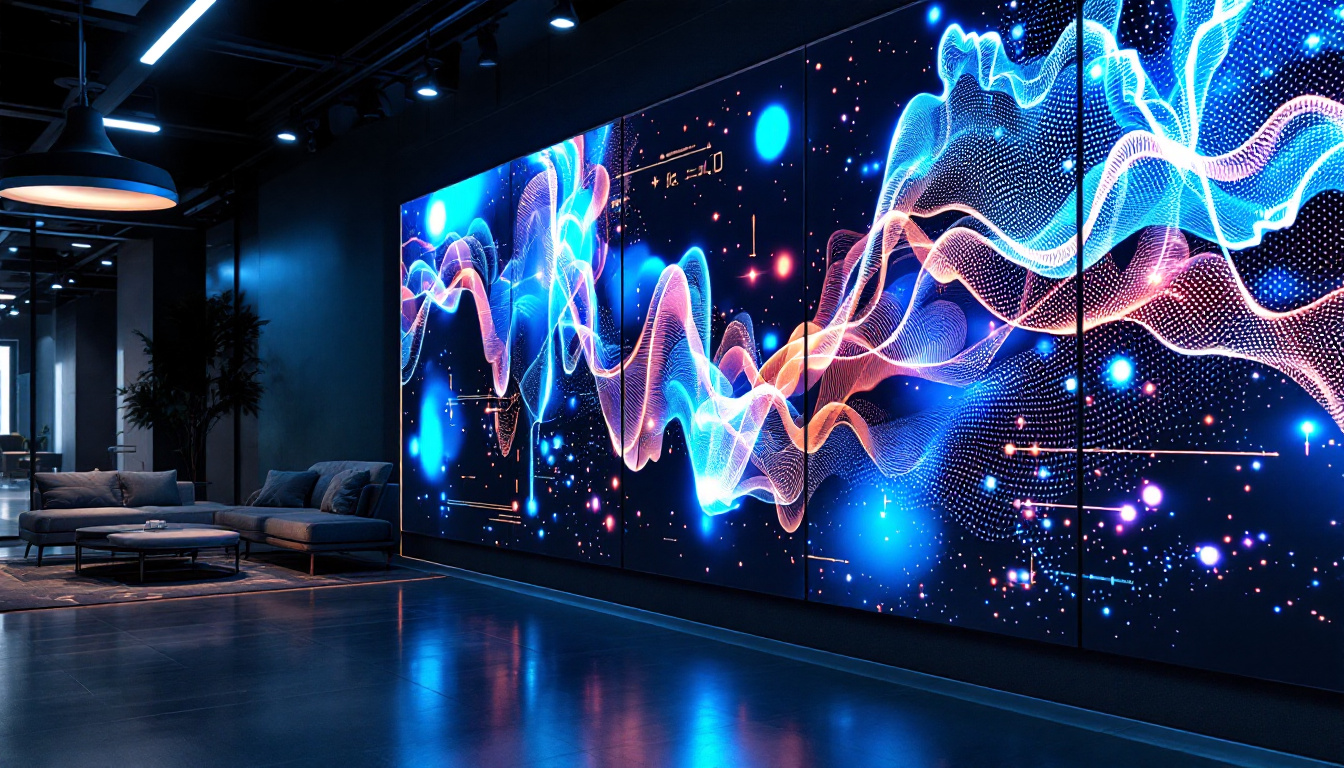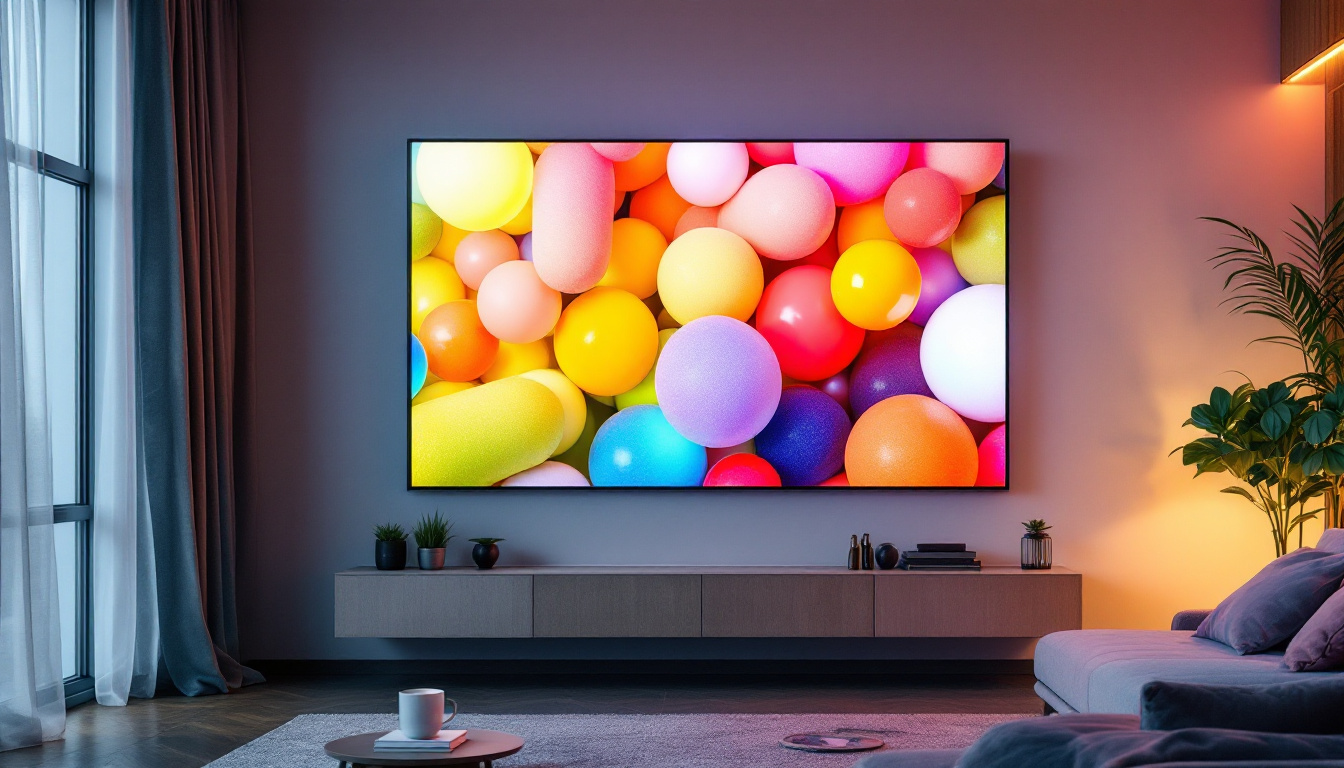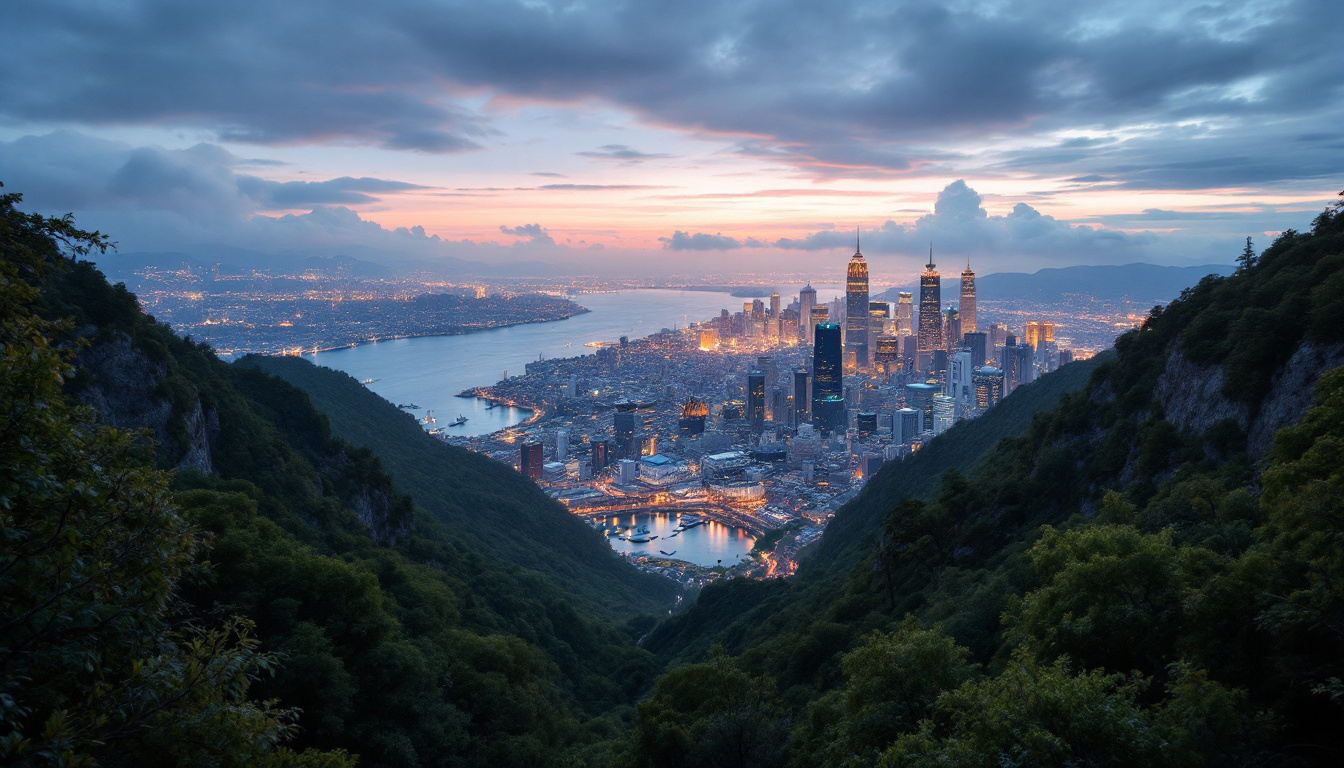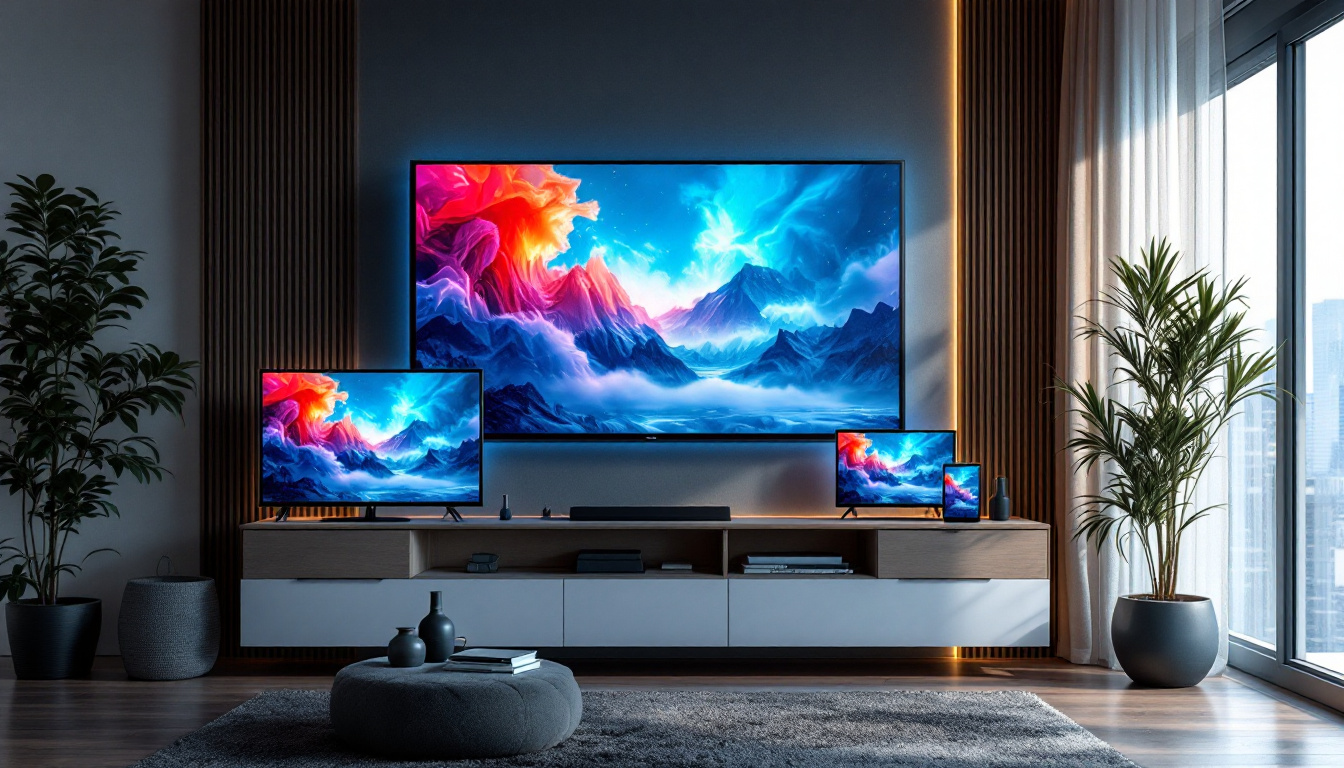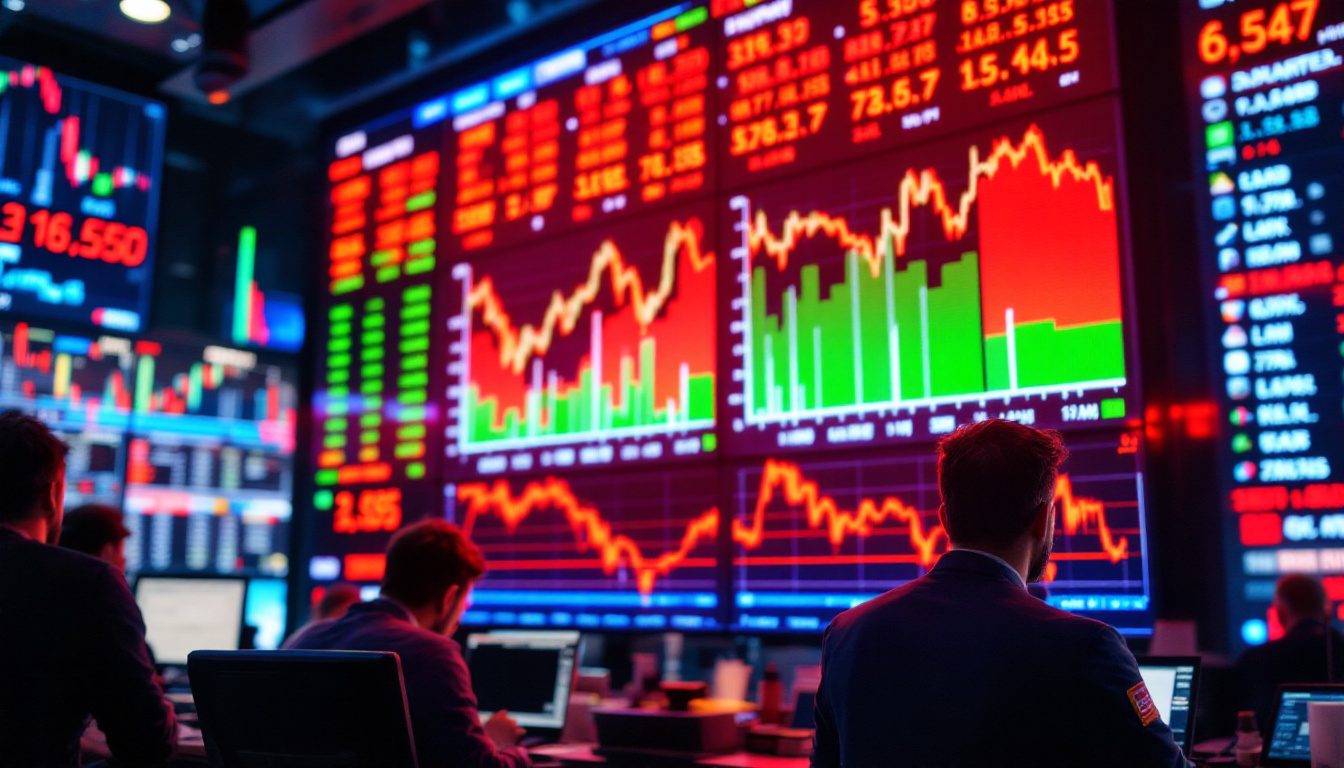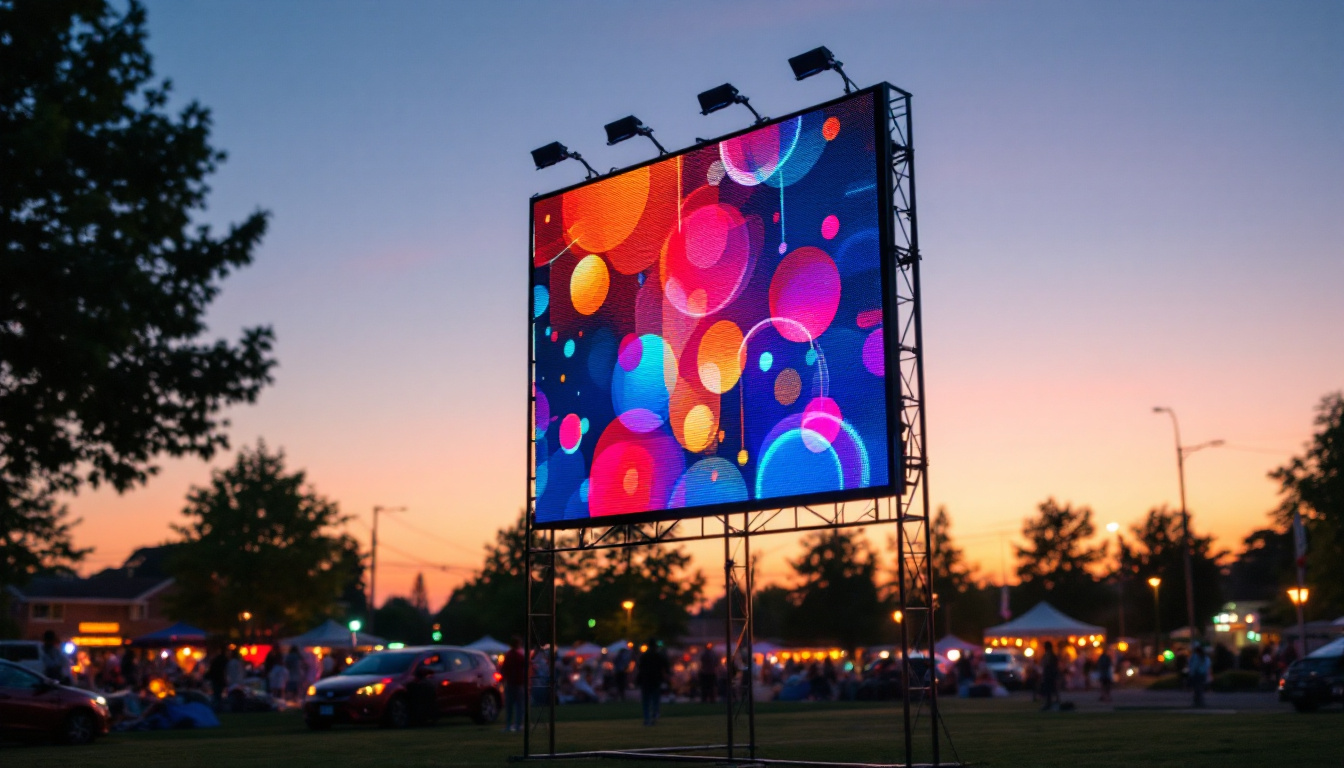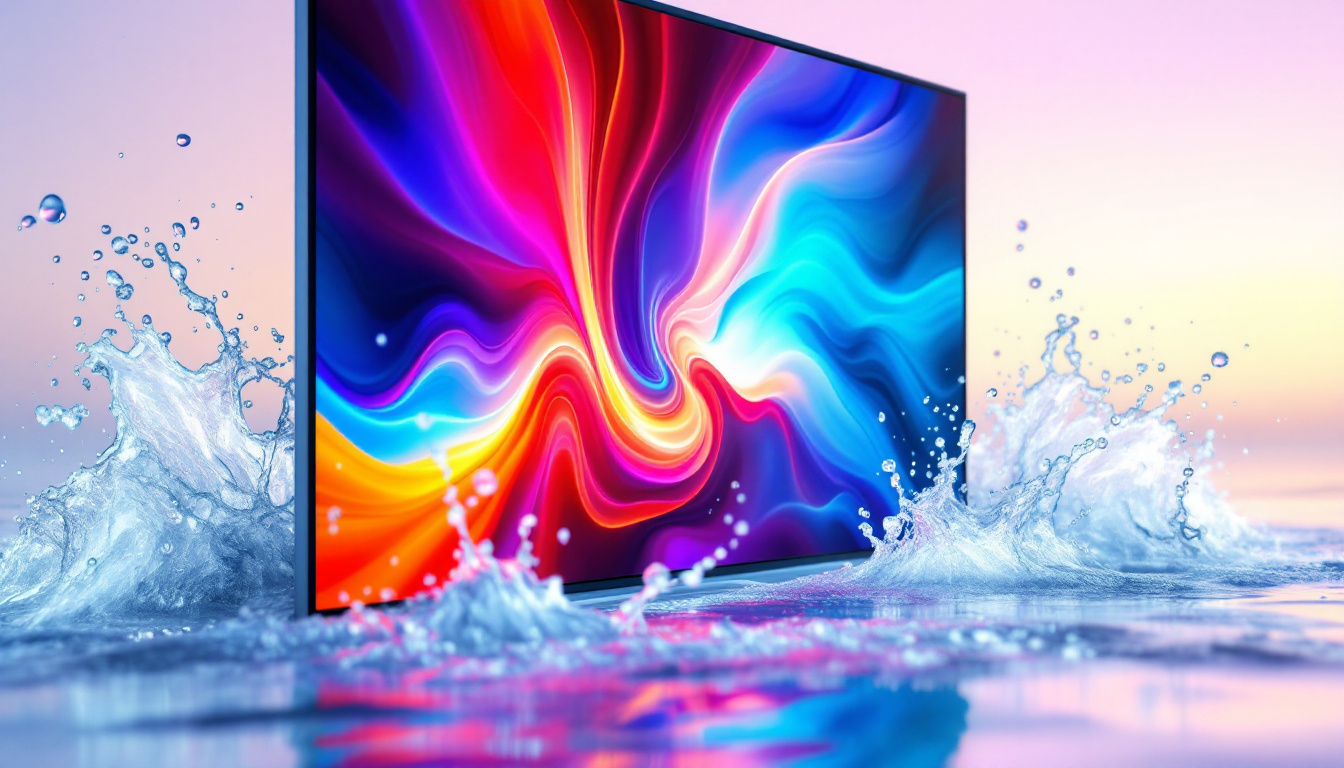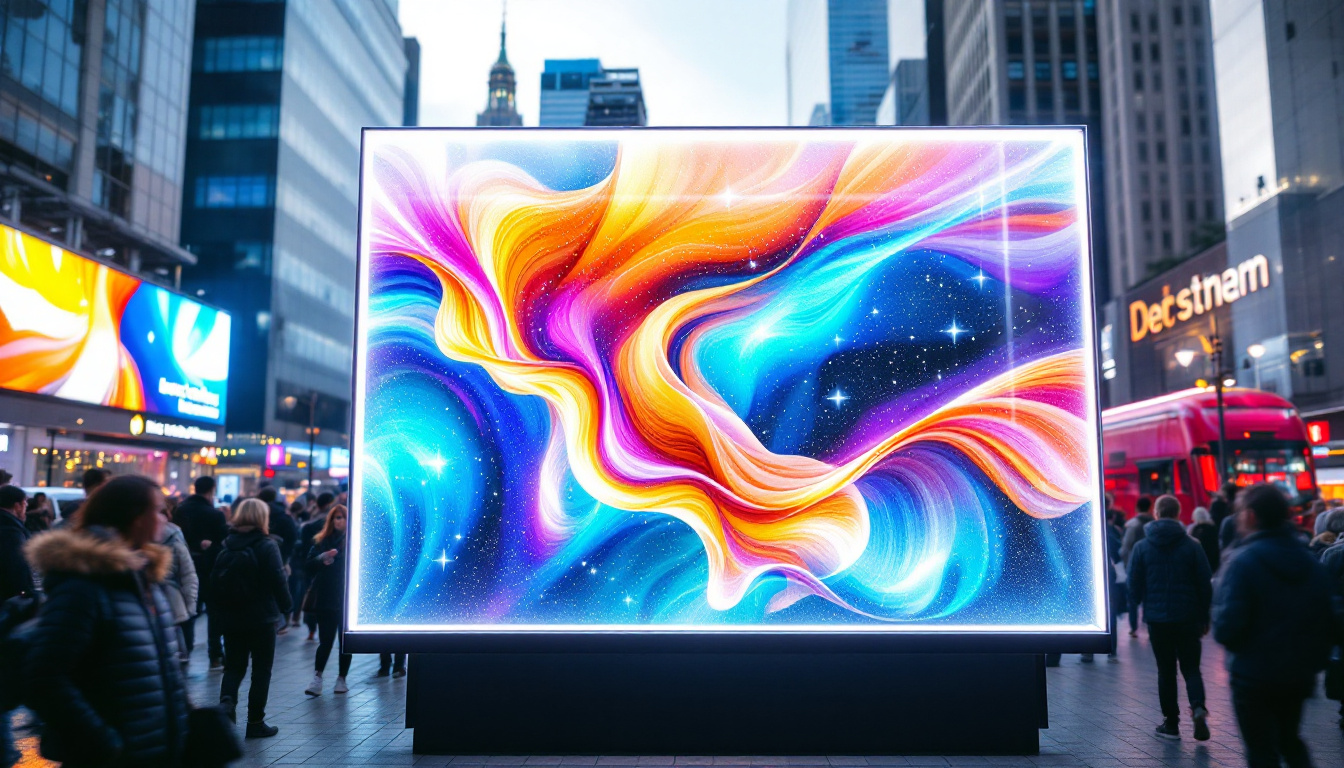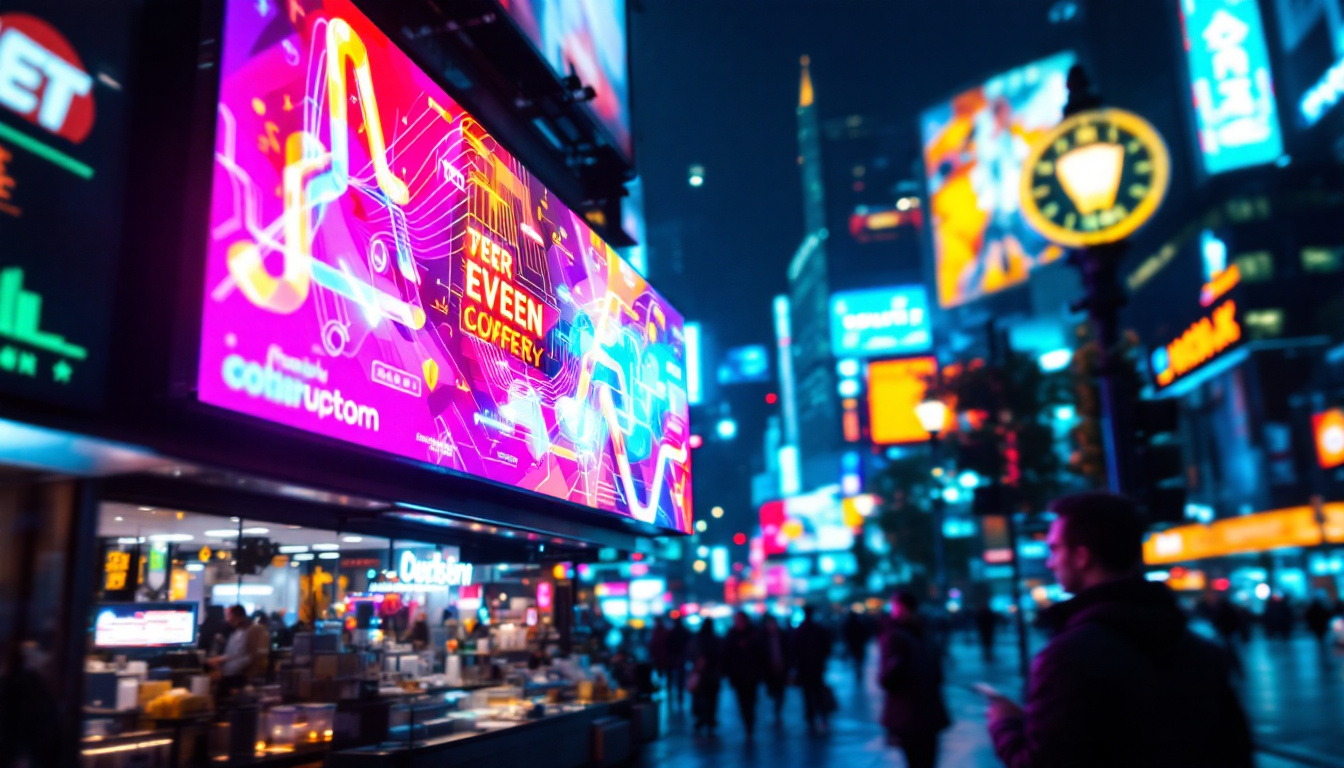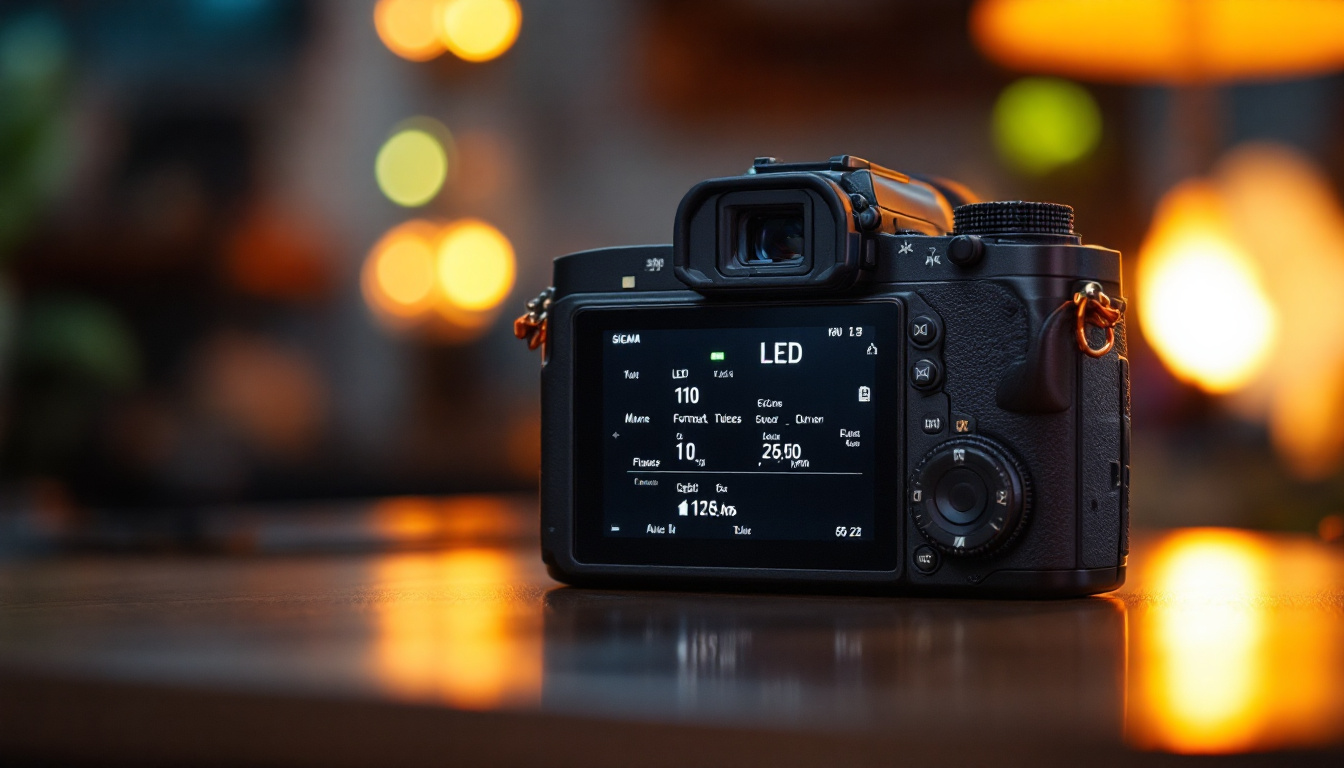In the realm of modern technology, LED displays have emerged as a transformative force in visual communication. These displays are not just tools for conveying information; they are also a canvas for artistic expression. This article delves into the intricacies of LED displays, exploring their technology, applications, and the impact they have on both art and industry.
Understanding LED Technology
Light Emitting Diodes (LEDs) are semiconductor devices that emit light when an electric current passes through them. This fundamental principle underpins the operation of LED displays, which consist of numerous individual LEDs arranged in a grid. The combination of these tiny light sources creates vibrant images and videos that can be seen from considerable distances.
The Basics of LED Displays
LED displays can be categorized into two main types: direct view and backlit. Direct view LED displays utilize individual LEDs to create images directly, while backlit displays use LEDs to illuminate a liquid crystal display (LCD) panel. Each type has its unique advantages and applications, ranging from large outdoor billboards to smaller indoor screens. Direct view displays are particularly popular for their ability to deliver high contrast and brightness, making them ideal for environments where visibility is paramount, such as sports arenas and concert venues.
One of the most significant benefits of LED technology is its energy efficiency. Compared to traditional display technologies, such as incandescent bulbs or even older LCD screens, LEDs consume significantly less power. This efficiency not only reduces operational costs but also minimizes environmental impact, making LED displays a more sustainable choice. Additionally, the longevity of LEDs—often exceeding 50,000 hours—means less frequent replacements, further contributing to their cost-effectiveness and eco-friendliness.
Color and Brightness
Color accuracy and brightness are critical factors in the performance of LED displays. The color produced by an LED is determined by the materials used in its construction. By combining red, green, and blue (RGB) LEDs, displays can produce a wide spectrum of colors. Advanced techniques, such as color calibration, ensure that the displayed images are true to life. Manufacturers often employ sophisticated algorithms to adjust color output dynamically, enabling displays to maintain consistency across various viewing angles and distances.
Brightness, measured in nits, indicates how well a display can be seen in various lighting conditions. High-brightness LED displays are essential for outdoor applications, where sunlight can wash out images on less capable screens. Manufacturers continually innovate to enhance brightness levels while maintaining color fidelity, resulting in stunning visual experiences. Moreover, the integration of adaptive brightness technology allows LED displays to adjust their luminance based on ambient light conditions, ensuring optimal visibility whether in a dimly lit room or under the glaring sun. This adaptability not only enhances user experience but also contributes to energy savings, as the display can lower its brightness when full intensity is unnecessary.
Applications of LED Displays
The versatility of LED displays has led to their adoption across various industries. From advertising to entertainment, the applications are as diverse as they are impactful. Understanding these applications can provide insight into how LED technology is shaping the future of visual communication.
Advertising and Marketing
One of the most prominent uses of LED displays is in advertising. Digital billboards and signage have revolutionized the way brands communicate with consumers. These displays can showcase dynamic content, including videos and animations, capturing the attention of passersby in ways that static signs cannot.
Moreover, LED displays allow for real-time updates, enabling advertisers to change their messaging based on time, weather, or audience demographics. This adaptability enhances engagement and ensures that advertisements remain relevant and timely. The integration of data analytics into these systems further empowers marketers to tailor their content, optimizing campaigns based on viewer interactions and preferences. This level of personalization not only boosts brand visibility but also fosters a deeper connection with the target audience.
Entertainment and Events
In the entertainment industry, LED displays have become a staple at concerts, festivals, and sporting events. Large-scale LED screens provide immersive experiences, displaying everything from live feeds to stunning visual effects. The ability to synchronize these displays with audio and other elements creates a cohesive atmosphere that captivates audiences.
Additionally, LED technology is increasingly used in theater productions and art installations. Artists and designers leverage the flexibility of LED displays to create interactive and dynamic pieces that engage viewers in new and exciting ways. For instance, many modern performances incorporate LED backdrops that can change scenes instantaneously, enhancing storytelling and emotional impact. The use of LED technology in art has also led to innovative exhibitions where viewers can interact with the displays, creating a dialogue between the artwork and the audience that transforms the traditional viewing experience into something participatory and memorable.
Information and Wayfinding
LED displays are also invaluable tools for conveying information in public spaces. Airports, train stations, and shopping malls utilize LED screens for wayfinding and information dissemination. These displays provide real-time updates on schedules, directions, and emergency alerts, ensuring that visitors have access to the information they need.
Furthermore, the clarity and visibility of LED displays make them ideal for conveying important messages in crowded environments. Their ability to stand out, even in challenging lighting conditions, enhances the overall experience for users navigating complex spaces. Beyond just wayfinding, these displays can also serve as platforms for community engagement, showcasing local events, public service announcements, and even art from local creators. By integrating community-focused content, LED displays contribute to a sense of place and belonging, turning public spaces into vibrant hubs of information and interaction.
The Artistic Potential of LED Displays
Beyond their practical applications, LED displays have opened new avenues for artistic expression. Artists are increasingly exploring the potential of this medium, creating works that challenge traditional notions of art and engage audiences in innovative ways.
Interactive Installations
Interactive LED installations invite viewers to engage with the art actively. By incorporating sensors and software, artists can create experiences that respond to the presence or actions of the audience. This interactivity fosters a deeper connection between the viewer and the artwork, transforming passive observation into active participation.
For instance, an installation might change colors or patterns based on the movement of people nearby, creating a dynamic and ever-evolving piece. Such installations not only captivate viewers but also encourage them to reflect on their relationship with technology and art.
Projection Mapping
Projection mapping is another innovative use of LED technology in art. This technique involves projecting images onto three-dimensional surfaces, transforming ordinary objects into captivating visual displays. Artists can manipulate light and shadow to create immersive environments that blur the lines between reality and illusion.
From architectural facades to sculptures, projection mapping offers endless possibilities for creativity. Artists can tell stories, evoke emotions, and create experiences that resonate with audiences on multiple levels.
Challenges and Considerations
While LED displays offer numerous advantages, they also present challenges that must be addressed. Understanding these challenges is essential for anyone considering the use of LED technology, whether for commercial, artistic, or informational purposes.
Cost and Accessibility
The initial investment for high-quality LED displays can be significant. While prices have decreased over the years, particularly for smaller screens, larger installations can still require a substantial budget. This cost can be a barrier for smaller businesses or independent artists looking to incorporate LED technology into their projects.
However, as technology continues to advance, more affordable options are becoming available. Additionally, the long-term savings associated with energy efficiency and reduced maintenance costs can offset the initial expenditure, making LED displays a viable option for many.
Environmental Concerns
Despite their energy efficiency, LED displays are not without environmental concerns. The production and disposal of electronic components can contribute to electronic waste, which poses significant challenges for sustainability. It is crucial for manufacturers and consumers alike to consider the lifecycle of LED products, from production to disposal.
Many companies are now prioritizing eco-friendly practices, such as using recyclable materials and implementing take-back programs for old displays. By supporting these initiatives, consumers can help mitigate the environmental impact of LED technology.
The Future of LED Displays
The future of LED displays is bright, with ongoing advancements poised to enhance their capabilities further. As technology continues to evolve, several trends are emerging that will shape the landscape of LED displays in the coming years.
Integration with Smart Technology
As the world becomes increasingly interconnected, the integration of LED displays with smart technology is expected to rise. This integration allows for more sophisticated content management systems, enabling users to control and customize their displays remotely. Smart LED displays can adapt to their environment, optimizing brightness and color based on surrounding conditions.
Furthermore, the use of artificial intelligence in content creation and management is on the horizon. AI algorithms can analyze viewer engagement and preferences, tailoring content to maximize impact. This level of personalization could revolutionize advertising and information dissemination.
Advancements in Flexibility and Design
The design of LED displays is also evolving. Flexible LED technology allows for curved and irregular shapes, enabling designers to create unique installations that were previously impossible. This flexibility opens new avenues for creativity, allowing artists and architects to push the boundaries of traditional display formats.
As LED technology continues to advance, the potential for innovative designs and applications will only expand, further blurring the lines between art and technology.
Conclusion
LED displays have transcended their initial role as mere information conveyers, becoming powerful tools for artistic expression and communication. Their versatility, energy efficiency, and adaptability make them an integral part of modern society, influencing everything from advertising to public art.
As technology continues to evolve, the future of LED displays promises even greater possibilities. By embracing these advancements, artists, businesses, and communities can harness the power of LED technology to create engaging, impactful experiences that resonate with audiences around the world.
In an age where visual communication is paramount, understanding and exploring the potential of LED displays is more important than ever. Whether through innovative advertising, immersive art installations, or essential information dissemination, LED displays are set to play a pivotal role in shaping our visual landscape for years to come.
Explore the Future of Visual Communication with LumenMatrix
Ready to elevate your visual storytelling and captivate your audience like never before? Discover LumenMatrix’s innovative LED display solutions, where technology meets creativity. From vibrant Indoor and Outdoor LED Wall Displays to dynamic Vehicle and Sports Displays, our offerings are designed to make your message shine. Experience the difference with our Floor, Custom, All-in-One, and Transparent LED Displays, each crafted to revolutionize how you engage and connect. Check out LumenMatrix LED Display Solutions today and join us in shaping the future of visual communication.

